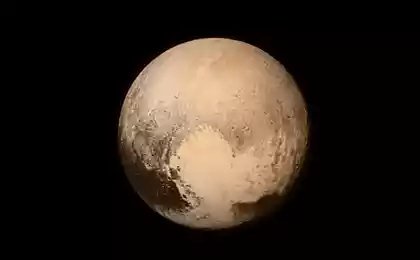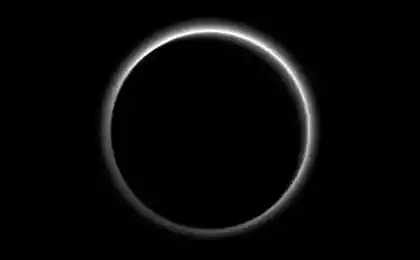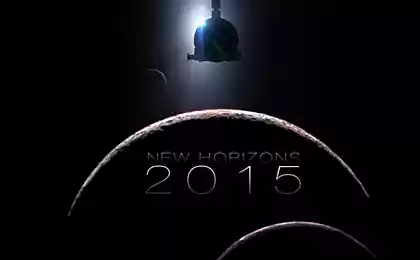918
Pluto discovered a powerful atmospheric layer and the absence of the magnetosphere

thickness of the atmosphere of Pluto and Earth - a comparison of the NASA i>
Scientists continue to process the data sent by the probe New Horizons. Now the unit has sent a total of about 1-2% obtained during the flyby of Pluto data. But the lack of this information in order to make interesting conclusions about the composition and structure of the atmosphere of the dwarf planet. As it turned out, the thickness of the atmospheric layer Pluto is about 1, 6 thousand kilometers. The upper layer is a molecular nitrogen near the surface and in the composition of the atmosphere detected methane and complex hydrocarbon compounds.
It is worth noting that information about Pluto's atmosphere, will make the following conclusions have been obtained one hour after rendezvous with Pluto New Horizons. At this point, the station was in the shadow of the planet, and with the help of a spectrograph Alice were able to observe the dynamics of the absorption of UV radiation from the sun molecular nitrogen atmosphere, depending on changes in the level of illumination of Pluto.

After a half hour after the rendezvous, another tool apparatus, SWAP (Solar Wind around Pluto), helped discover Pluto plasma "tail" formed by molecular nitrogen, ionized UV radiation from the sun. Nitrogen emitted enough energy for our star to overcome gravity of Pluto, which is pretty weak. By the way, as shown by preliminary studies of the magnetosphere have no dwarf planet.

Scientists suggest that the solar wind generates a shock wave around Pluto, already mentioned above, plus a cold plasma tail. While the exact size of the "tail" and its composition, scientists are not reported.

It also appears that Pluto rather quickly losing atmosphere - the rate of escape of matter in space is 500 tons per hour. The same Mars loses only about a ton of material per hour.
Source: geektimes.ru/post/259036/
Tesla Motors tripled its land area under "Gigafabriku Battery"
16 science fiction films recommended by Harvard University























